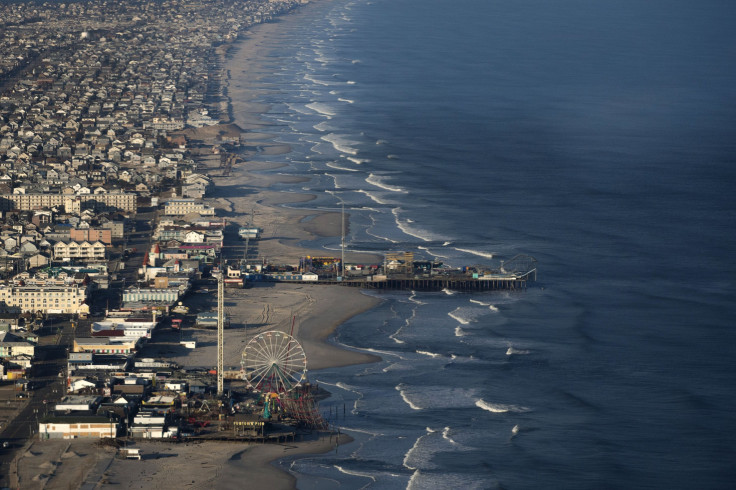Artificial Islands Off New York, New Jersey Coasts Proposed To Protect From Future Storm Surges

When Hurricane Sandy struck the Eastern Seaboard in October 2012, it left a trail of devastation and heartache in its wake. Now, the U.S. government is considering a multibillion-dollar plan to build artificial islands off the coast of New York and New Jersey to cushion their densely populated coasts from future storms.
"How do you protect New Jersey and New York at the same time from the storm of the future?" Alan Blumberg, a professor at Stevens Institute of Technology in Sandy-devastated Hoboken, N.J., asked the Associated Press. "Our idea is to build a chain of islands, like a long slender banana. The wave action and storm surge will reflect off these islands and go back out to sea rather than hitting the coast.”
Storm surges are exceptional rises in water caused by strong winds. As the winds of a storm or hurricane blow across the ocean’s surface, they produce a vertical circulation in the ocean. When the storm reaches shallower waters, the circulation is disrupted by the ocean bottom. Because it can no longer go down, the excess water has nowhere else to go but inland.
It was primarily the storm surge from Hurricane Sandy that caused $79 billion in damages in New York and New Jersey alone and killed 159 people.
Known as the “Blue Dunes” proposal, the idea for building artificial islands along the states’ crowded shores comes from engineers at the Stevens Institute who partnered with the WXY architectural firm and West 8 Urban Design and Landscape Architecture. Their artificial island proposal is one of 10 project ideas that will be considered and voted on next week as part of a competition sponsored by the U.S. Department of Housing and Urban Development. The department challenged innovators to come up with novel ways to blunt the impact of storm surges.
Other proposals include re-establishing oyster colonies in tidal flats along the coasts, creating nature preserves that could absorb water and constructing seawalls around the cities.
Creating artificial islands would cost between $10 billion and $12 billion. Funding for the project would come partly from a $60 billion grant passed by Congress last year for Sandy relief efforts.
Unfortunately, there are several naysayers who think building artificial islands 12 miles out to sea isn’t the best way to keep storm surges at bay.
"The sand borrow sites always run into strong objections from the U.S. Fish and Wildlife Service," Stewart Farrell, head of Stockton College's Coastal Research Center in southern New Jersey, told the Associated Press. "Next in line would be the historical preservationists: You can't cover up Captain Kidd's treasure ships, no way! And every 19th-century coal barge is an historical treasure. Then there are abundant submarine cables, lines, pipes and rights of way."
Not to mention the surfers who would have to hunt elsewhere for the perfect wave.
© Copyright IBTimes 2024. All rights reserved.












